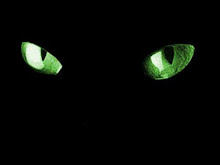I was researching for some information about nightmares and I found this kind of dreams, maybe you have had one.
I couldn´t wait for show this information, I hope you enjoy this stuff.
False awakening
A false awakening is a vivid dream about awakening from sleep. After a false awakening, subjects often dream they are performing daily morning rituals such as cooking, cleaning and eating. The experience is sometimes called a double dream, or a dream within a dream.
Further concepts
Lucidity
A false awakening may occur following an ordinary dream or following a lucid dream (one in which the dreamer has been aware of dreaming). Particularly if the false awakening follows a lucid dream, the false awakening may turn into a "pre-lucid dream", that is, one in which the dreamer may start to wonder if they are really awake and may or may not come to the correct conclusion. False awakenings often preceded lucidity as a cue, but they could also follow the realization of lucidity, often losing it in the process.
Simulated reality
A false awakening has significance to the simulation hypothesis, which states that what we perceive as reality is an illusion, as made evident by our mind's inability to distinguish between reality and dreams. Therefore, advocates of the simulation hypothesis argue that the probability of our "true" reality being a simulated reality is affected by the prevalence of false awakenings.
A false awakening has significance to the simulation hypothesis, which states that what we perceive as reality is an illusion, as made evident by our mind's inability to distinguish between reality and dreams. Therefore, advocates of the simulation hypothesis argue that the probability of our "true" reality being a simulated reality is affected by the prevalence of false awakenings.
Continuum
Another type of false awakening is a continuum. In a continuum, the subject falls asleep in real life, but in the dream following, the brain simulates the subject as though they were still awake. At times the individual can perform action unknowingly. The movie Nightmare on Elm Street popularized this phenomenon.
Another type of false awakening is a continuum. In a continuum, the subject falls asleep in real life, but in the dream following, the brain simulates the subject as though they were still awake. At times the individual can perform action unknowingly. The movie Nightmare on Elm Street popularized this phenomenon.
Symptoms of a false awakening
Realism and unrealism
Certain aspects of life may be dramatized, or out of place in false awakenings. Things may seem wrong: details, like the painting on a wall, not being able to talk or difficulty reading (purportedly reading in lucid dreams is often difficult or impossible). In some experiences, the subject's senses are heightened, or changed.
Certain aspects of life may be dramatized, or out of place in false awakenings. Things may seem wrong: details, like the painting on a wall, not being able to talk or difficulty reading (purportedly reading in lucid dreams is often difficult or impossible). In some experiences, the subject's senses are heightened, or changed.
Repetition
Because the mind still dreams after a false awakening, there may be more than one false awakening in a single dream. Subjects may dream they wake up, eat breakfast, brush their teeth, and so on; suddenly awake again in bed (still in a dream), begin morning rituals again, awaken again, and so forth.
Because the mind still dreams after a false awakening, there may be more than one false awakening in a single dream. Subjects may dream they wake up, eat breakfast, brush their teeth, and so on; suddenly awake again in bed (still in a dream), begin morning rituals again, awaken again, and so forth.
Types of false awakening
Type 1
Type 1 may be thought of as the "common-or-garden" sort, in which the dreamer seems to wake up, but not necessarily in realistic surroundings, that is, not in their own bedroom. A pre-lucid dream may ensue. More commonly, dreamers will believe they have awakened and then "fall back asleep" in the dream.
Type 2
The type 2 false awakening seems to be considerably less common. Green characterized it as follows: the subject appears to wake up in a realistic manner, but to an atmosphere of suspense. His surroundings may at first appear normal, and he may gradually become aware of something uncanny in the atmosphere, and perhaps of unwonted sounds and movements. Or he may "awake" immediately to a "stressed" and "stormy" atmosphere. In either case, the end result would appear to be characterized by feelings of suspense, excitement or apprehension.
The type 2 false awakening seems to be considerably less common. Green characterized it as follows: the subject appears to wake up in a realistic manner, but to an atmosphere of suspense. His surroundings may at first appear normal, and he may gradually become aware of something uncanny in the atmosphere, and perhaps of unwonted sounds and movements. Or he may "awake" immediately to a "stressed" and "stormy" atmosphere. In either case, the end result would appear to be characterized by feelings of suspense, excitement or apprehension.






No comments:
Post a Comment